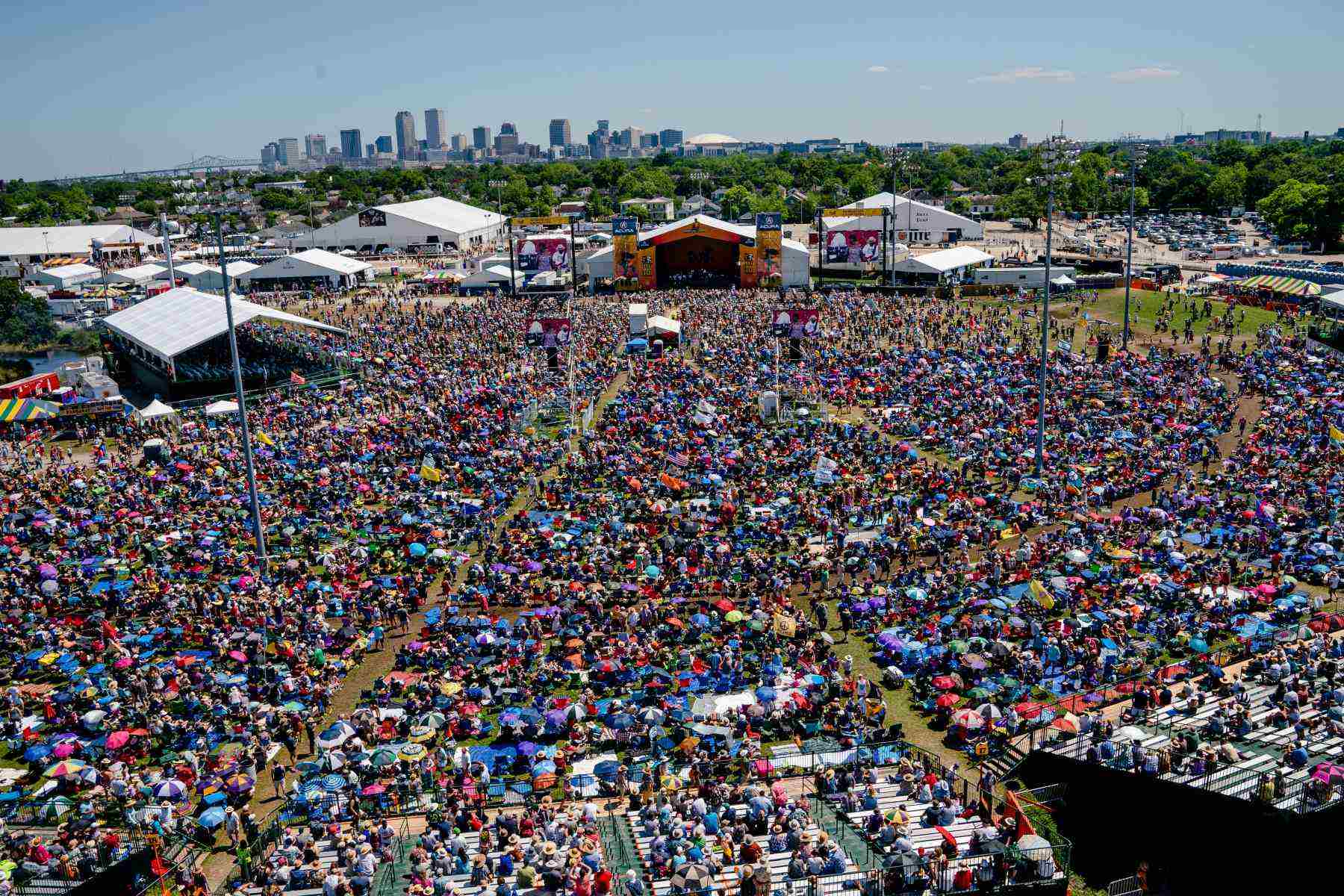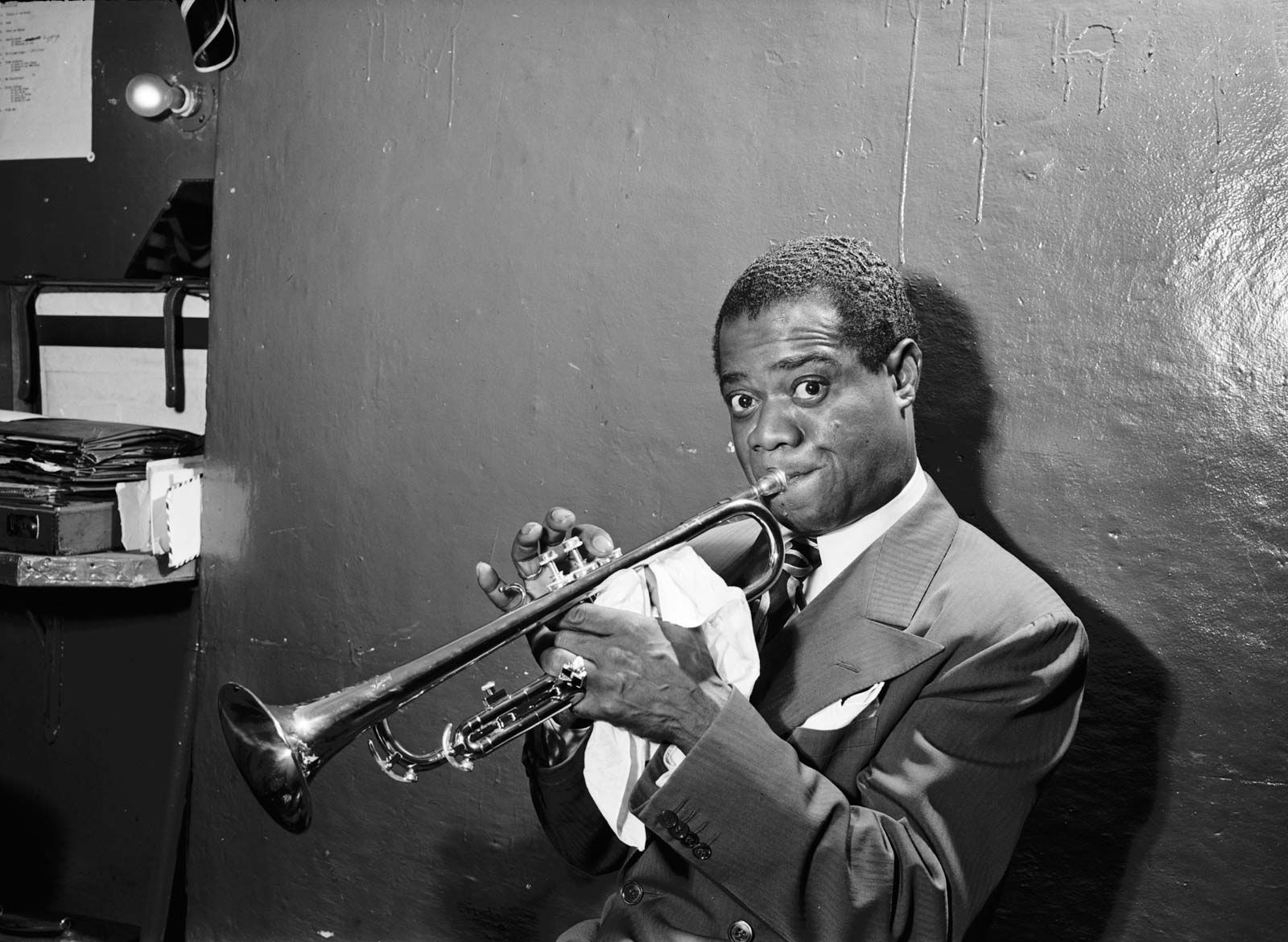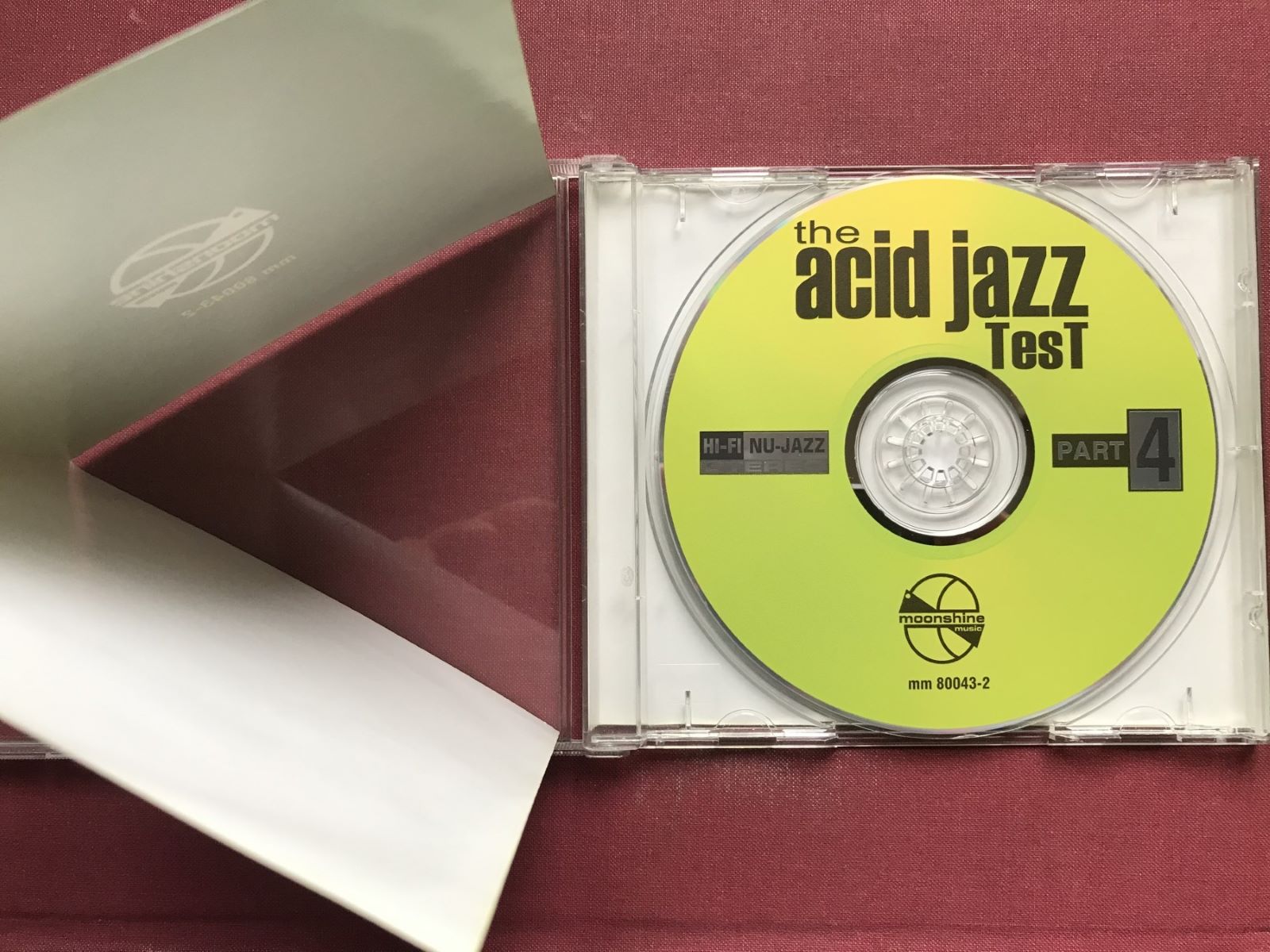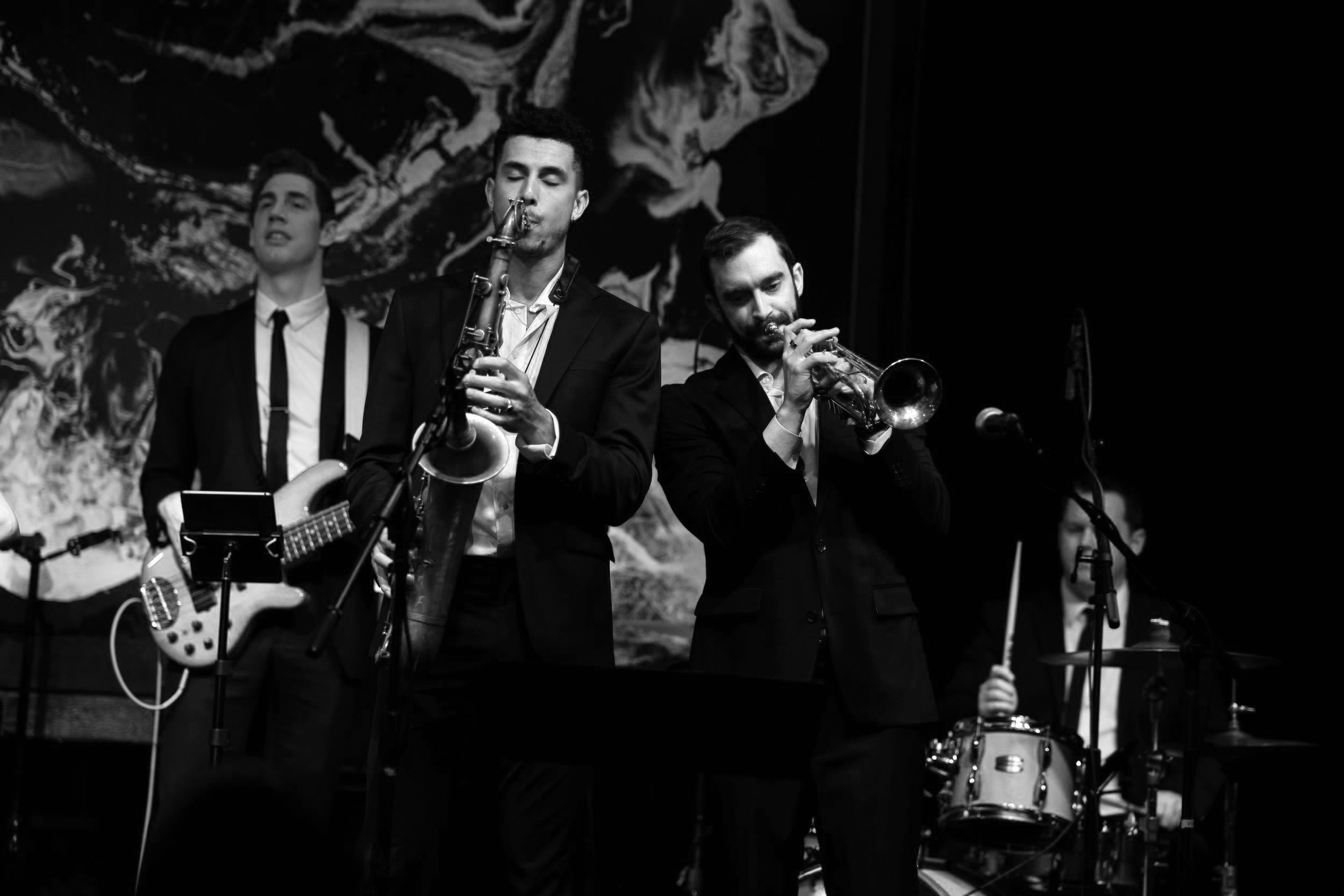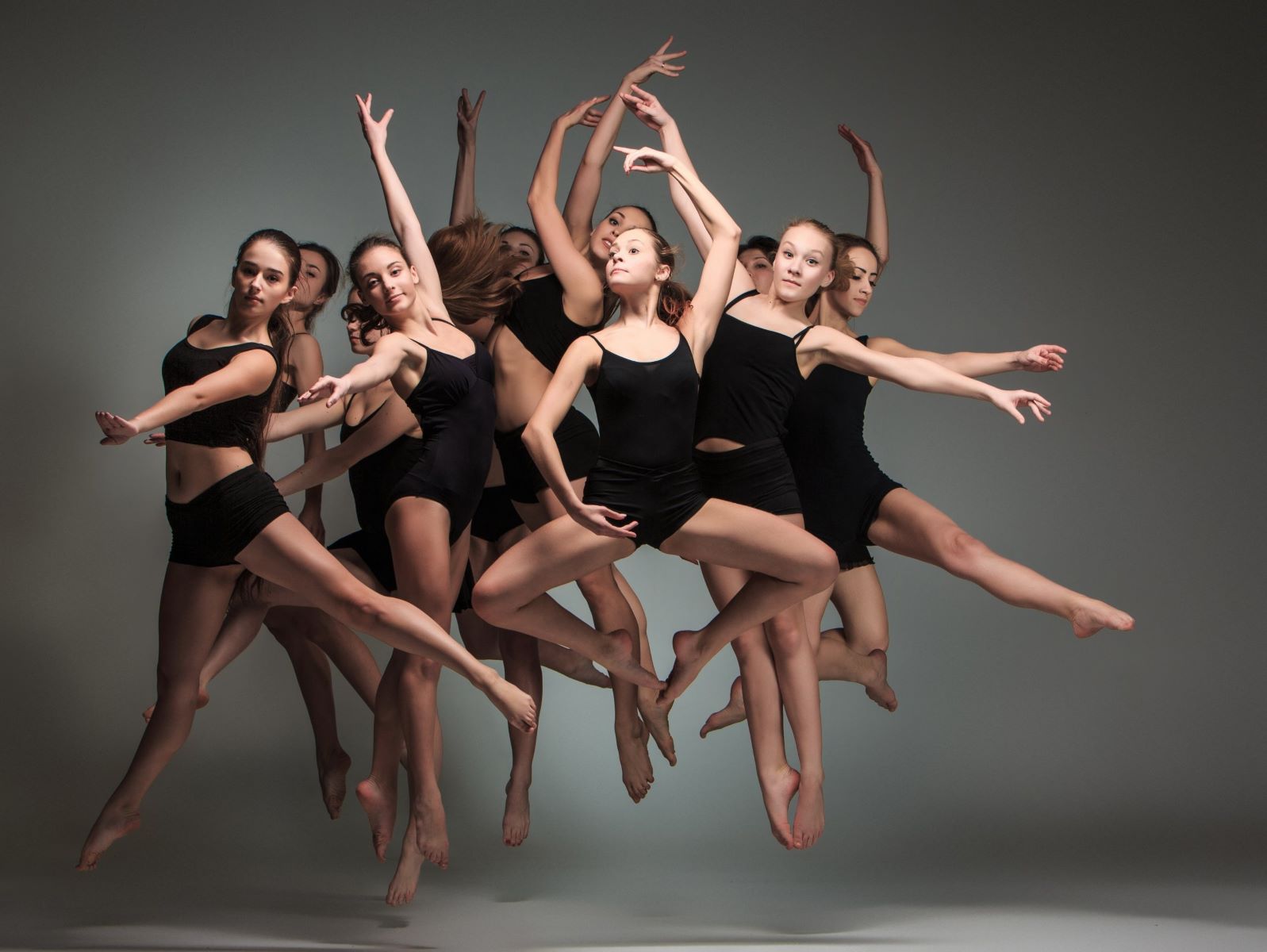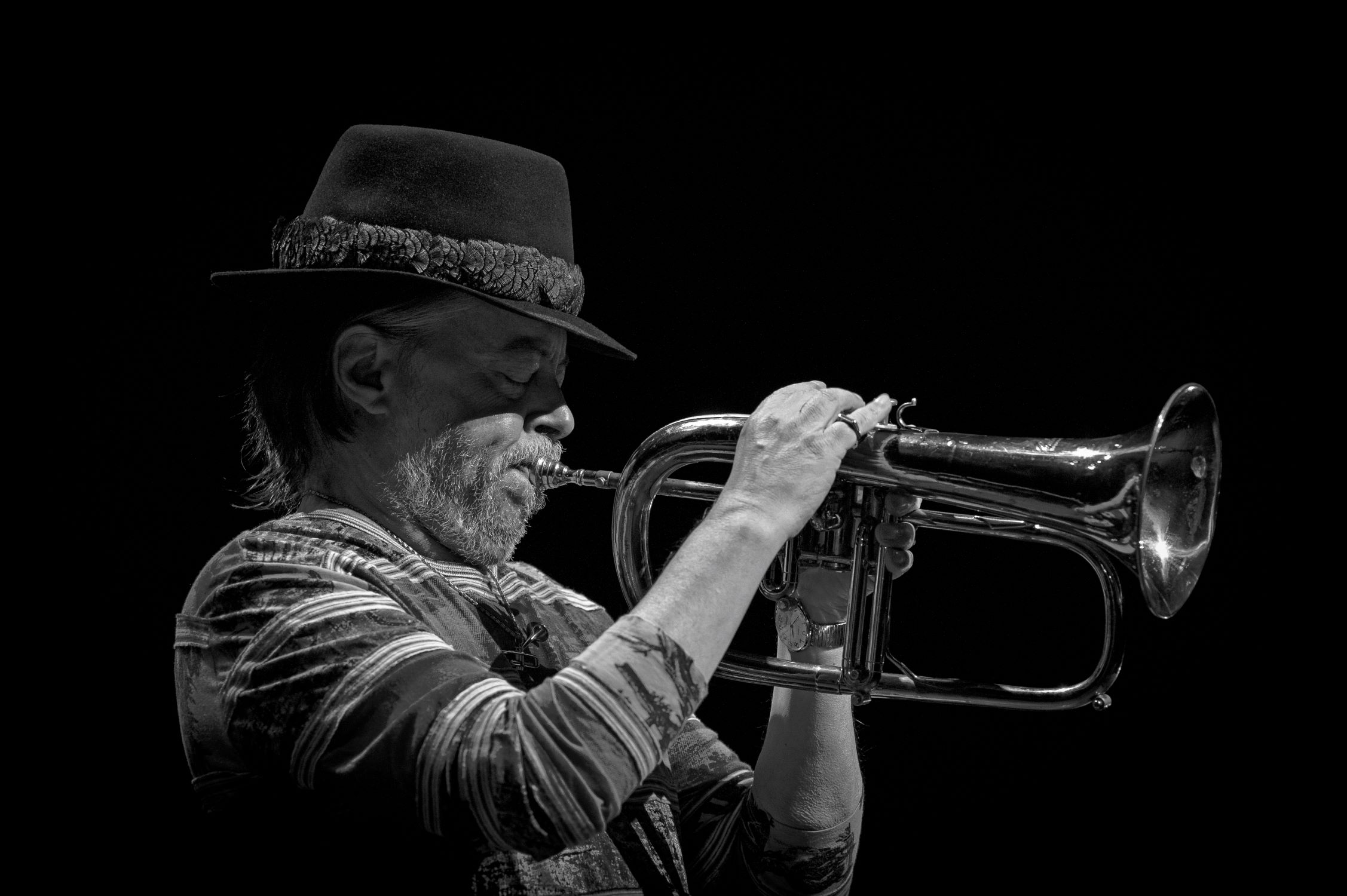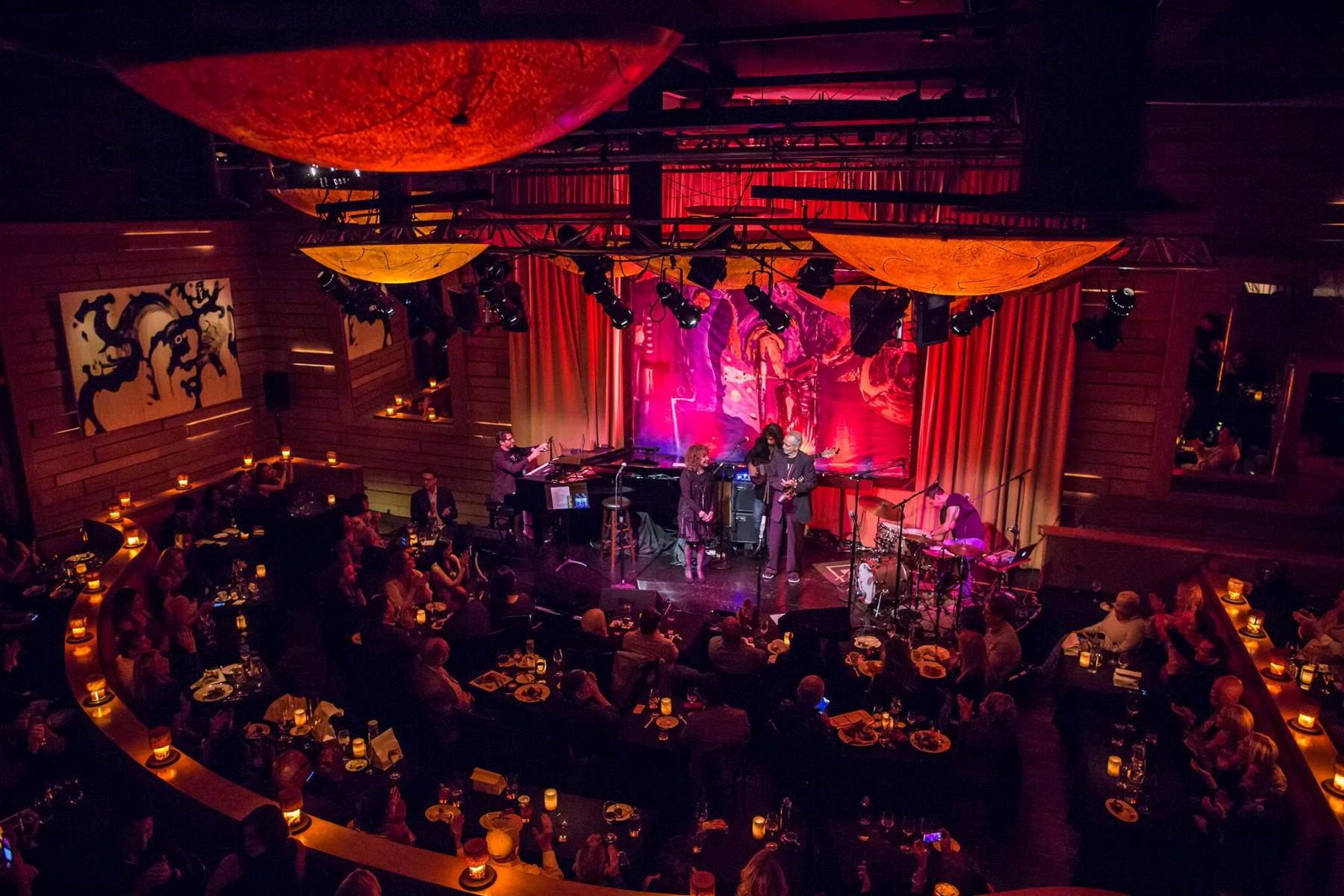

Jazz
What Does Jazz Music Represent
Modified: February 18, 2024
Discover the soulful essence of jazz music, its roots and evolution. Uncover what jazz signifies as an art form and cultural movement. Dive into the magic of jazz.
(Many of the links in this article redirect to a specific reviewed product. Your purchase of these products through affiliate links helps to generate commission for AudioLover.com, at no extra cost. Learn more)
Table of Contents
Introduction
Jazz music, with its distinct rhythm, improvisation, and soulful melodies, is a genre that captures the hearts and minds of people around the world. Originating in the early 20th century in the African American communities of New Orleans, Jazz has since evolved into a global phenomenon, influencing countless musicians and transcending cultural boundaries.
With its roots deeply embedded in the African American experience and drawing inspiration from various musical traditions, Jazz represents much more than just a genre of music. It is an art form that reflects the cultural diversity, creativity, and resilience of its creators and performers.
Throughout its history, Jazz has undergone numerous transformations, incorporating elements from different musical styles and traditions. From the early days of Dixieland and Swing to the complex harmonies of Bebop and the experimental nature of Free Jazz, Jazz has continually pushed the boundaries of musical expression.
What makes Jazz truly unique is its emphasis on improvisation. Unlike other musical genres where compositions are played as written, in Jazz, musicians are encouraged to express themselves through spontaneous improvisation. This element of freedom and creativity allows for an ever-changing and dynamic musical experience, where no two performances are alike.
Furthermore, Jazz has played a pivotal role in shaping the cultural and social landscape of various communities. It has served as a means of cultural expression, a vehicle for social commentary, and a catalyst for change.
In this article, we will explore the origins of Jazz, its distinctive characteristics, its influence and evolution over time, and its significance as a form of expression. We will also discuss the role of improvisation, Jazz’s impact on other music genres, and how it has served as a means of social commentary. So, grab your favorite pair of headphones and join us on this fascinating journey into the world of Jazz music.
Origins of Jazz Music
The roots of Jazz can be traced back to the melting pot of cultures and musical traditions in the early 20th century New Orleans. Influenced by African rhythms, European classical music, Caribbean traditions, and African American spirituals, Jazz emerged as a unique amalgamation of these diverse influences.
One of the key elements that shaped the development of Jazz was the interaction between African American and Creole musicians in New Orleans. African Americans, who were descendants of enslaved peoples, brought their rich musical heritage, including call and response singing, syncopated rhythms, and polyrhythms. On the other hand, Creole musicians, who were of African and European heritage, added European classical techniques and instruments, such as stringed instruments and brass bands, to the mix.
In the early days of Jazz, genres like Dixieland and Ragtime emerged. Dixieland, characterized by lively rhythms and collective improvisation, was popularized by African American musicians in the late 19th century. Ragtime, on the other hand, featured syncopated melodies influenced by classical music. Pioneers like Scott Joplin brought Ragtime to prominence, paving the way for the development of Jazz.
As Jazz spread beyond New Orleans, it found a home in cities like Chicago, New York, and Kansas City. This migration gave rise to the Swing era, led by big bands and renowned musicians like Duke Ellington and Count Basie. The Swing era brought Jazz into the mainstream and introduced a wider audience to the genre’s infectious rhythms and catchy melodies.
It is essential to acknowledge that Jazz’s development and popularity were deeply entwined with the African American experience. As African Americans faced systemic racism and segregation, Jazz became a symbol of their resilience and defiance. The music served as a means of expression, providing a platform for African American musicians to make their voices heard and challenge societal norms.
Today, the origins of Jazz are celebrated and recognized as a vital part of American cultural heritage. New Orleans, often referred to as the birthplace of Jazz, is still renowned for its vibrant Jazz scene and festivals like the New Orleans Jazz & Heritage Festival continue to showcase the genre’s rich history and evolution.
Next, let’s delve into the distinctive characteristics that define Jazz music and set it apart from other genres.
Characteristics of Jazz Music
Jazz music is marked by several key characteristics that set it apart from other genres and contribute to its unique sound and style. These characteristics include improvisation, swing rhythm, syncopation, blue notes, and expressive phrasing.
Improvisation is at the core of Jazz music. Unlike other genres where musicians strictly adhere to written compositions, Jazz musicians have the freedom to spontaneously create and explore musical ideas in real-time. This improvisational element allows for a constant flow of creativity and makes each performance distinctive and unpredictable.
Swing rhythm is another defining feature of Jazz. It refers to the grooving and rhythmic feel created by the interaction of the instruments. The swing rhythm, characterized by a syncopated and off-beat pattern, gives Jazz its infectious and irresistible energy, making it almost impossible to resist tapping your foot or bobbing your head along to the music.
Syncopation is a rhythmic technique commonly found in Jazz. It involves accenting or emphasizing off-beats or unexpected rhythmic patterns, creating tension and pushing the boundaries of traditional musical structure. Syncopation adds complexity and liveliness to Jazz compositions, making them dynamic and exciting to listen to.
The use of blue notes is a distinctive feature of Jazz. Blue notes are microtonal variations of the standard diatonic scale, which give the music a bluesy and soulful sound. These notes, often achieved by bending or sliding notes on wind instruments or through vocal inflection, evoke a sense of emotion and expressiveness in Jazz performances.
Expressive phrasing is also a fundamental characteristic of Jazz music. Musicians use various techniques, such as slides, glissandos, and vibrato, to infuse their playing with emotion and create a personal and distinctive musical voice. This expressive phrasing allows Jazz musicians to convey their individuality and engage listeners on a deep and emotional level.
In addition, Jazz often features complex harmonies and chord progressions. Musicians employ extended chords, chromaticism, and altered tones to create a rich harmonic palette that adds depth and complexity to the music. These intricate harmonies provide a foundation for improvisation and enable musicians to explore a wide range of melodic possibilities.
Combining improvisation, swing rhythm, syncopation, blue notes, expressive phrasing, and complex harmonies, Jazz is a genre that constantly evolves and surprises. It is a music form that thrives on innovation and pushes the boundaries of musical expression.
Next, let’s delve into how Jazz has influenced and evolved over the years.
Influence and Evolution of Jazz
Jazz music has had a profound influence on the development of various musical genres and styles, both within the realm of Jazz itself and beyond. Its ability to adapt, blend, and evolve has allowed it to transcend cultural and geographical boundaries, making it a global phenomenon.
Within the Jazz genre, various subgenres and styles have emerged over the years, each with its own distinct characteristics and artistic vision. From the lively and energetic swing of the big band era to the complex harmonies and improvisations of Bebop, from the avant-garde and experimental nature of Free Jazz to the fusion of Jazz and rock in the genre of Jazz-Rock Fusion, Jazz continues to evolve and redefine itself.
Jazz has also had a profound impact on other music genres, influencing musicians from diverse backgrounds and shaping their artistic expressions. Artists in genres such as R&B, soul, pop, and even hip-hop have drawn inspiration from Jazz, incorporating elements of improvisation, swing, and expressive phrasing into their music.
One notable example is the influence of Jazz on the development of the Bebop movement in the 1940s. Bebop, with its complex harmonies and fast-paced improvisations, paved the way for the evolution of modern jazz and left a lasting impact on the development of subsequent genres like cool jazz and hard bop.
Jazz has also found its way into the realm of popular music, with artists like Frank Sinatra, Ella Fitzgerald, and Louis Armstrong gaining mainstream recognition and introducing Jazz to a wider audience. Their smooth vocals and impeccable phrasing brought Jazz into the homes of millions, solidifying its place in the musical landscape.
Furthermore, the cross-pollination between Jazz and various global music traditions has yielded exciting musical fusions. Jazz musicians have collaborated with musicians from different cultural backgrounds, incorporating elements of Latin music, African rhythms, and Indian classical music, resulting in genres like Latin Jazz, Afro-Cuban Jazz, and Indo-Jazz fusion.
It is worth noting that the influence of Jazz extends beyond musical boundaries. Jazz has also been a catalyst for social change, shedding light on important social issues through its music. During the Civil Rights movement in the United States, Jazz served as a platform for African American musicians to express their resistance against racial segregation and injustice. The music became a powerful tool in advocating for equality and social justice.
Overall, the influence and evolution of Jazz have been vast and far-reaching. From its impact on the Jazz genre itself to its influence on a wide range of musical genres and its role in social and cultural movements, Jazz continues to be a dynamic and transformative force in the world of music.
Next, let’s delve into how Jazz serves as a form of expression for its musicians.
Jazz as a Form of Expression
Jazz is more than just music—it is a powerful form of expression that allows musicians to convey their emotions, tell stories, and connect with listeners on a deep and visceral level. Through its improvisational nature, rhythmic complexity, and emotional depth, Jazz serves as a medium for artists to express their inner thoughts and experiences.
One of the primary ways Jazz musicians express themselves is through improvisation. Improvisation is at the heart of Jazz, providing musicians with the freedom to spontaneously create and explore musical ideas. It allows them to express their individuality, showcase their technical skills, and channel their emotions through their instrument or voice. Through improvisation, musicians can communicate their unique musical voice and create personal connections with their audience.
Furthermore, Jazz musicians often infuse their performances with personal and emotional experiences. They draw inspiration from their own lives, relationships, struggles, and triumphs, and translate these emotions into their music. Whether it’s a melancholic ballad or an upbeat swing tune, Jazz allows musicians to pour their soul into the music and share their story with the world.
Expressive techniques and phrasing also play a crucial role in Jazz as a form of expression. Musicians use various techniques, such as bend notes, vibrato, slurs, and slides, to add nuance and emotion to their playing. These techniques allow musicians to convey a wide range of emotions, from joy and excitement to sorrow and longing. Jazz musicians are masters of expressive phrasing, enabling them to connect with their audience on a deeply emotional level.
Moreover, Jazz has provided a platform for marginalized communities, particularly African Americans, to voice their struggles, dreams, and aspirations. During a time of segregation and racial discrimination, Jazz became a form of resistance and empowerment. It allowed African American musicians to assert their cultural identity, challenge societal norms, and demand equality through their music. Jazz served as a powerful tool for social commentary and a means to advocate for justice and equality.
Jazz’s legacy as a form of expression continues to thrive today, with artists using the language of Jazz to convey contemporary issues and push artistic boundaries. Through their compositions and performances, Jazz musicians tackle a wide range of themes, including political and social issues, personal reflections, and cultural exploration.
Ultimately, Jazz’s ability to embody personal experiences and emotions, its emphasis on improvisation and expressive techniques, and its historical significance as a form of resistance have cemented its status as a powerful and timeless form of artistic expression.
Next, let’s explore the role of improvisation in Jazz and how it contributes to the genre’s unique charm.
The Role of Improvisation in Jazz
One of the defining characteristics of Jazz music is improvisation—the ability for musicians to create and perform in the moment, spontaneously shaping the music as it unfolds. Improvisation is at the very heart of Jazz, setting it apart from other genres and giving it a sense of constant innovation and unpredictability.
At its core, improvisation in Jazz is about spontaneity and self-expression. It provides musicians with the freedom to deviate from written compositions, allowing them to explore new melodic ideas, harmonies, and rhythms. Through improvisation, Jazz musicians communicate their thoughts, emotions, and musical personalities in a personal and unique way.
Improvisation in Jazz can take many forms. It can involve solo improvisations, where individual musicians take turns showcasing their skills and creativity. It can also take the form of collective improvisation, where the entire ensemble collaborates in real-time to create a spontaneous musical conversation.
Improvisation in Jazz is built upon a foundation of musical knowledge and vocabulary. Jazz musicians possess a deep understanding of harmonic progressions, scales, and melodic patterns, allowing them to navigate the complexities of improvisation with ease. This knowledge, combined with their technical prowess and creativity, enables them to compose and perform in real-time, crafting melodies and phrases that reflect their unique musical voice.
Furthermore, improvisation in Jazz is a collaborative process. Musicians listen and respond to each other, building off each other’s ideas, and creating a musical dialogue. This interplay and exchange of ideas create a dynamic and interactive performance experience, where the music becomes a shared experience between the musicians and the audience.
Through improvisation, Jazz musicians constantly challenge themselves, pushing the boundaries of their skills and creativity. They explore new harmonic territories, experiment with different rhythmic patterns, and take risks in their playing. This constant sense of exploration and innovation keeps Jazz fresh and exciting, as no two performances are ever the same.
Jazz musicians also draw inspiration from the rich history of the genre, incorporating elements of past Jazz greats into their improvisations. They pay homage to the masters who came before them while infusing their playing with their own modern influences and personal style.
Improvisation is a central aspect of Jazz education and learning. Jazz musicians spend years honing their improvisational skills, studying the music’s language, and exploring different approaches to improvisation. This dedication to the art of improvisation ensures that the tradition of Jazz improvisation is carried forward and continues to evolve with each new generation of musicians.
Ultimately, improvisation is the lifeblood of Jazz, breathing vitality and excitement into the music. It is the soul of Jazz, allowing musicians to express themselves in the moment, forging connections with fellow musicians and audiences alike. Through improvisation, Jazz continues to captivate and inspire, proving that sometimes the most beautiful moments in music are those that are created in the spur of the moment.
Next, let’s explore how Jazz music has played a pivotal role in shaping cultural identity.
Jazz and Cultural Identity
Jazz music has played a profound role in shaping cultural identity, particularly in the African American community. It stands as a testament to the artistic, social, and cultural resilience of African Americans, while also incorporating diverse influences from various cultures and traditions.
The roots of Jazz can be traced back to the African American experience in the early 20th century, especially in New Orleans. African Americans, with their rich musical heritage, brought their rhythms, call and response singing, and blues sensibilities to Jazz. Through their music, they expressed their struggles, joys, and dreams, establishing Jazz as an art form rooted in their cultural identity.
Jazz also united diverse cultural backgrounds within the African American community. Creole musicians, with their mixed African and European heritage, brought European classical influences, brass bands, and sophisticated arrangements to Jazz. This blend of African and European traditions resulted in a distinct sound that reflected the unique cultural fusion within the community.
Furthermore, Jazz became an important vehicle for African Americans to assert their cultural identity and challenge societal norms. In a time of racial segregation and discrimination, Jazz provided a platform for African American musicians to showcase their talent, intelligence, and creativity. It served as a means of resistance and empowerment, giving voice to their experiences and celebrating their cultural heritage.
As Jazz gained popularity and spread beyond African American communities, it became a symbol of innovation, freedom, and cultural diversity. Jazz musicians like Louis Armstrong, Duke Ellington, and Ella Fitzgerald became cultural ambassadors, showcasing the sophistication and brilliance of African American musical artistry to a worldwide audience.
Jazz’s impact on cultural identity is not limited to the African American community. Across the globe, Jazz has been embraced and incorporated into various cultural landscapes. Through collaboration and fusion with different musical traditions, Jazz has influenced and enriched cultural identities in countries such as Brazil, France, Japan, and South Africa.
In Brazil, for example, the fusion of Jazz and traditional Brazilian music gave birth to Bossa Nova, characterized by its gentle rhythms and poetic lyrics. In France, Jazz found a home in Parisian clubs, attracting artists from all over the world and contributing to the vibrant cultural scene of the city.
In Japan, Jazz took hold during the post-World War II period and became an essential part of the country’s cultural identity. Japanese musicians embraced Jazz and added their unique flair, blending it with traditional Japanese instruments and melodies, creating a fusion known as Jazz-Fusion or “Tokyo Jazz.”
In South Africa, Jazz played a significant role in the struggle against apartheid. Musicians like Hugh Masekela and Miriam Makeba used Jazz as a medium to express the political and social injustices of the time, while also drawing on their African roots and heritage.
Overall, Jazz’s influence on cultural identity is far-reaching and transcendent. It has served as a platform for self-expression, resistance, and celebration of cultural heritage for African Americans and has been embraced and integrated into the cultural fabric of communities around the world. Jazz stands as a testament to the power of music in shaping and affirming cultural identity.
Next, let’s explore how Jazz music has influenced and shaped other genres of music.
Jazz’s Impact on Other Music Genres
Jazz has had a profound influence on the development and evolution of various music genres, shaping their sound, style, and approach. Its innovative spirit, improvisational nature, and fusion of different musical elements have paved the way for new genres and redefined existing ones.
One significant genre that owes its origins to Jazz is Rhythm and Blues (R&B). R&B blended elements of Jazz, Gospel, and Blues, creating a soulful and danceable sound. Jazz artists like Louis Jordan and Nat King Cole played a pivotal role in the transition from Swing to R&B, influencing the vocal delivery, rhythmic feel, and instrumental arrangements of the genre.
Similarly, the genre of Soul music emerged from the fusion of Jazz, Gospel, and R&B. Artists like Ray Charles, Sam Cooke, and Aretha Franklin drew from the emotional expressiveness of Jazz and incorporated it into their own soulful and passionate performances. The improvisational nature of Jazz often found its way into the vocal stylings of Soul, adding depth and authenticity to the genre.
Jazz’s influence also extended to the world of popular music. In the mid-20th century, artists like Frank Sinatra and Ella Fitzgerald popularized Jazz-infused interpretations of popular songs, bringing Jazz into the mainstream. Their smooth vocals, sophisticated phrasing, and jazz-inspired arrangements paved the way for the genre of vocal Jazz, also known as the Great American Songbook.
Fusion genres, such as Jazz-Rock Fusion and Jazz-Funk, have emerged as a result of Jazz’s cross-pollination with other genres. Artists like Miles Davis and Herbie Hancock incorporated elements of Rock, Funk, and Electric instruments into their Jazz compositions, creating a new sound that appealed to a wider audience. Jazz-Funk, with its groovy rhythms and energetic basslines, found a home in the dance clubs of the 1970s, while Jazz-Rock Fusion introduced a new level of technical complexity and experimentation to Jazz.
Jazz has also influenced the world of Latin music, giving rise to genres such as Latin Jazz and Afro-Cuban Jazz. Musicians like Dizzy Gillespie and Machito fused Jazz harmonies and improvisation with Latin rhythms, creating a vibrant and energetic sound that celebrated the cultural heritage of Latin America. This fusion of Jazz and Latin music continues to thrive, inspiring musicians and audiences around the world.
Furthermore, Jazz has left its mark on the world of electronic music. Artists in genres like Acid Jazz, Nu Jazz, and Trip-Hop draw inspiration from Jazz’s harmonic complexity and improvisational spirit, incorporating electronic elements and production techniques into their compositions. This fusion of Jazz and electronic music creates a unique blend of traditional and futuristic sounds.
Jazz’s impact on other genres goes beyond specific musical elements and techniques. It has also influenced the mindset and approach to music-making, encouraging artists to embrace improvisation, explore creative boundaries, and seek innovation. This influence can be seen in genres as diverse as progressive rock, avant-garde music, and even hip-hop, where artists like A Tribe Called Quest and The Roots incorporate Jazz samples and live instrumentation into their music.
Overall, Jazz’s impact on other music genres is undeniable. Its innovative spirit, improvisational nature, and fusion of musical elements have inspired and shaped countless artists across different genres, contributing to the ever-evolving landscape of contemporary music.
Finally, let’s explore how Jazz has served as a means of social commentary throughout its history.
Jazz as a Means of Social Commentary
Jazz music has long served as a powerful means of social commentary, providing a platform for artists to express their perspectives on political, social, and cultural issues. From the early days of its inception, Jazz has given voice to marginalized communities, challenged social norms, and advocated for equality and justice.
During the era of racial segregation and discrimination in the United States, Jazz became an important vehicle for African American musicians to express their experiences and frustrations. Songs like Billie Holiday’s “Strange Fruit” vividly depicted the horrors of racism and lynching, serving as a haunting reflection of the social injustices of the time.
Jazz compositions and performances also had a significant impact during the Civil Rights Movement. Artists like Max Roach, Charles Mingus, and Archie Shepp used their music to highlight the struggle for racial equality and call for social change. Their music became a rallying cry, resonating with activists and providing a cultural soundtrack for the movement.
The message of social commentary in Jazz was not confined to the United States alone. In South Africa, under the oppressive apartheid regime, Jazz played a crucial role in raising awareness about the injustices faced by Black South Africans. Musicians like Hugh Masekela and Miriam Makeba used their music to expose the realities of segregation and advocate for freedom and equality.
Jazz has also been a means of addressing broader societal issues. In the 1960s and 1970s, during the Vietnam War, Jazz musicians expressed their opposition to the conflict through their music. Artists like John Coltrane and Charles Lloyd created emotionally charged compositions that resonated with the anti-war sentiment and provided a backdrop to the social unrest of the time.
Furthermore, Jazz has been a vehicle for addressing gender and identity issues. Female Jazz musicians, such as Mary Lou Williams and Alice Coltrane, have broken barriers and challenged gender norms in the traditionally male-dominated Jazz world. Their music and activism have paved the way for future generations of women in Jazz.
Jazz’s role as a means of social commentary is not only limited to its lyrical content but also extends to its overall spirit of freedom and liberation. Jazz’s improvisational nature, emphasis on individual expression, and celebration of cultural diversity stand as a testament to the power of unity and embracing difference.
Today, Jazz continues to be a voice for social commentary, addressing contemporary issues and reflecting the ever-changing landscape of society. Jazz festivals and concerts often feature performances that tackle topics such as systemic racism, environmental concerns, and socioeconomic inequality.
In essence, Jazz as a means of social commentary serves as a reminder of the power of music to inspire change and challenge societal norms. It captures the spirit of resilience and resistance, providing a platform for marginalized voices and shedding light on the issues that shape our world.
Now let’s conclude our exploration of Jazz and its significance.
Conclusion
Jazz music, with its rich history, distinctive characteristics, and powerful impact, stands as a testament to the resilience, creativity, and cultural expression of its creators and performers. From its origins in the African American communities of New Orleans to its global influence and evolution, Jazz has transcended cultural boundaries and left an indelible mark on the world of music.
Throughout its journey, Jazz has been a vehicle for cultural identity, reflecting the experiences and struggles of African Americans while incorporating diverse influences from various musical traditions. It has given voice to marginalized communities, challenged societal norms, and served as a form of resistance and social commentary.
The improvisational nature of Jazz has allowed musicians to express themselves in the moment, showcasing their technical skills, personal creativity, and emotional depth. Jazz’s distinctive characteristics, such as swing rhythm, syncopation, and expressive phrasing, contribute to its unique sound and style.
Jazz’s influence on other genres cannot be overstated. It has shaped the development of genres like R&B, Soul, Fusion, Latin Jazz, and more, infusing them with its innovative spirit and improvisational approach. Jazz’s impact extends beyond musical boundaries, inspiring artists across diverse genres and challenging the conventions of music-making.
Furthermore, Jazz has served as a means of social commentary, addressing issues of racism, inequality, war, and gender norms. Jazz musicians have used their music to shed light on social injustices, provide a voice to marginalized communities, and inspire social change.
As we conclude our exploration of Jazz, it is evident that Jazz music is not just a genre – it is a deeply ingrained cultural phenomenon. Its power to evoke emotions, tell stories, and connect with listeners on a profound level continues to captivate audiences worldwide.
So, let us embrace the extraordinary world of Jazz, immerse ourselves in its rich history, revel in its distinctive characteristics, and appreciate its lasting impact on the music world. Whether we are tapping our feet to a swinging rhythm or getting lost in the improvisational magic, let us celebrate the beauty and significance of Jazz.


